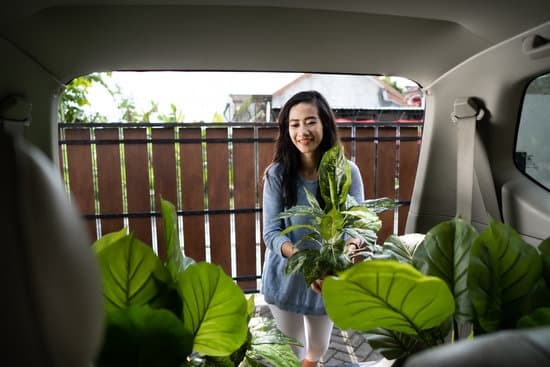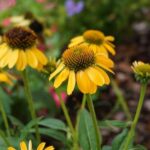Are you looking for inspiration and guidance on gardening layout ideas for your homestead? Designing a functional and aesthetically pleasing garden layout is essential for maximizing space and productivity on your property. Whether you are a novice or experienced gardener, having a well-planned garden layout can significantly impact the success of your homestead.
Homestead gardening involves cultivating your own fruits, vegetables, herbs, and flowers to create a sustainable and self-sufficient lifestyle. By designing an efficient garden layout, you can optimize the use of available space, improve crop yields, and enhance the overall beauty of your homestead. From traditional to modern styles, there are numerous garden layout ideas that you can explore to suit your preferences and needs.
When designing your garden layout, it is essential to consider factors such as sunlight exposure, soil quality, water availability, and climate conditions. By understanding the unique characteristics of your homestead, you can tailor your garden design to ensure the successful growth of plants. Additionally, incorporating sustainable practices into your garden layout can help minimize waste, conserve resources, and promote environmental stewardship.
Benefits of Having a Well-Planned Garden Layout
When it comes to homestead gardening, having a well-planned garden layout can make all the difference in creating a thriving and productive space. Not only does a thoughtfully designed layout enhance the visual appeal of your homestead, but it also contributes to the overall efficiency and success of your gardening endeavors. Here are some key benefits of having a well-planned garden layout:
1. Maximizing Space: By carefully planning out the layout of your garden, you can make the most efficient use of the available space on your homestead. This means you can grow more crops, flowers, and herbs in a limited area, increasing your yield and productivity.
2. Improved Organization: A well-planned garden layout helps you stay organized and keep track of what is planted where. This makes it easier to rotate crops, plan for successive plantings, and maintain proper spacing between plants for optimal growth.
3. Enhancing Aesthetics: Beyond just functionality, a well-planned garden layout can also greatly enhance the aesthetic appeal of your homestead. By incorporating design elements such as curved pathways, themed planting beds, or decorative borders, you can create a visually stunning garden that enhances the overall beauty of your property.
Incorporating these benefits into your homestead garden layout can elevate your gardening experience and help you achieve a flourishing and beautiful outdoor space that reflects your unique style and preferences. With careful planning and attention to detail, you can create a garden that not only yields bountiful harvests but also serves as a peaceful retreat for relaxation and enjoyment.
Factors to Consider When Designing Your Garden Layout
When designing the layout for your homestead garden, there are several factors to consider in order to create a functional and productive space. One of the key considerations is the size of your homestead and the amount of available land you have for gardening. Assessing the space will help determine what types of plants you can grow and how much you can fit into your garden layout.
Another important factor to consider is sunlight exposure. Different plants require varying levels of sunlight, so it is essential to take into account the orientation of your garden beds and any shading from nearby structures or trees. Planning for proper sunlight exposure will ensure that your plants thrive and produce a bountiful harvest.
Additionally, soil quality and drainage are crucial aspects to consider when designing your garden layout. Conducting a soil test can help determine the pH levels, nutrient content, and drainage capabilities of your soil. Based on these results, you can make informed decisions about which plants to grow and whether you need to amend the soil with compost or other organic matter.
To assist you in considering these factors when designing your gardening layout for your homestead, here are some helpful tips:
- Measure and map out your garden space
- Identify areas with full sun, partial sun/shade, or full shade
- Test soil quality and adjust as needed
By carefully considering these factors during the design process, you can create a well-planned garden layout that maximizes productivity and ensures successful growth for your crops.
- Consider companion planting techniques
- Plan for easy access to water sources
- Incorporate pathways for maintenance and harvesting
Overall, thoughtful consideration of these factors will contribute to the success of your homestead gardening endeavors and help you achieve a thriving and sustainable garden layout that meets both your practical needs and aesthetic preferences.
Traditional Garden Layout Styles for Homesteads
When it comes to designing a traditional garden layout for your homestead, there are several time-tested styles that can help you create a beautiful and functional space. One classic option is the English cottage garden, which features a mix of flowers, herbs, and vegetables planted in a seemingly unplanned but aesthetically pleasing manner. This style is ideal for those looking to create a charming and whimsical garden that feels like a natural extension of the surrounding landscape.
Another popular traditional garden layout style is the French formal garden, known for its symmetrical and geometric design principles. Typically featuring clipped hedges, ornate topiaries, and carefully manicured lawns, this style exudes elegance and sophistication. If you prefer a more structured and formal approach to gardening, the French formal garden layout may be the perfect choice for your homestead.
For those with larger homesteads or agricultural aspirations, the vegetable garden layout – also known as a kitchen garden – offers practicality combined with visual appeal. By organizing crops in neat rows or raised beds, you can maximize productivity while creating an organized and efficient space. Whether you opt for raised beds or row planting, the key is to ensure that your vegetable garden layout receives adequate sunlight and proper drainage to promote healthy plant growth.
| Garden Layout Style | Description |
|---|---|
| English Cottage Garden | A mix of flowers, herbs, and vegetables in an aesthetically pleasing manner. |
| French Formal Garden | Symmetrical design with clipped hedges and manicured lawns exuding elegance. |
| Vegetable Garden Layout (Kitchen Garden) | Organized crops in rows or raised beds for maximum productivity. |
Modern and Innovative Garden Layout Designs for Homesteads
When it comes to modern and innovative garden layout designs for homesteads, there are a plethora of creative ideas that can help you maximize both space and productivity. One popular trend in modern homestead gardening is the concept of vertical gardening.
By utilizing walls or structures to grow plants vertically, you can significantly increase your growing area without taking up additional ground space. This design not only adds a visually appealing element to your garden but also makes it easier to harvest and maintain your plants.
Utilizing Raised Beds and Containers
Another trend in modern gardening layout designs is the use of raised beds and containers. Raised beds provide better drainage, warmer soil temperatures, and improved access for planting, weeding, and harvesting. They also make it easier to control soil quality and nutrient levels.
Containers, on the other hand, offer flexibility in terms of placement and allow you to move plants around as needed. Both raised beds and containers are great options for growing fruits, vegetables, herbs, and flowers in a stylish and organized manner.
Integrating Technology Into Your Garden Layout
In this digital age, technology can play a significant role in enhancing your garden layout design. Consider incorporating smart irrigation systems that adjust watering schedules based on weather conditions or using mobile apps to track plant growth and health. Automated lighting systems can also help extend your growing season by providing artificial light when natural sunlight is limited. By embracing technological advancements, you can create a more efficient and sustainable garden layout for your homestead.
Incorporating Sustainable Practices Into Your Garden Layout
When planning your gardening layout for your homestead, it is essential to consider incorporating sustainable practices to not only benefit the environment but also to ensure the longevity and productivity of your garden. One key aspect of sustainable gardening is implementing water conservation methods.
This can include installing rain barrels to collect rainwater for irrigation, utilizing drip irrigation systems to minimize water waste, and choosing drought-resistant plants that require less watering. By reducing water usage in your garden, you can lower your environmental impact and save on water costs.
Another sustainable practice to consider in your garden layout is composting. Composting organic materials such as kitchen scraps, yard waste, and other biodegradable items can help enrich the soil in your garden naturally. Adding compost to your garden beds improves soil structure, provides essential nutrients to plants, and encourages beneficial microorganisms. By recycling organic matter through composting, you are reducing landfill waste and creating a closed-loop system within your garden.
Additionally, when designing your garden layout for your homestead, think about integrating native plants into your landscape. Native plants are adapted to the local climate and soil conditions, making them low-maintenance and resilient choices for your garden. They also support local pollinators and wildlife, contributing to biodiversity conservation. Including a variety of native plants in your gardening layout not only enhances the beauty of your homestead but also promotes ecosystem health.
| Sustainable Practices | Benefits |
|---|---|
| Water Conservation | Lower environmental impact and reduce water costs. |
| Composting | Enrich soil naturally, provide nutrients to plants, reduce landfill waste. |
| Native Plants | Low-maintenance, resilient choices that support biodiversity conservation. |
Tips for Maximizing Space and Productivity in Your Garden Layout
One of the key factors to consider when designing your gardening layout for your homestead is maximizing space and productivity. With limited land available, it’s important to make the most out of every square foot in order to yield a bountiful harvest. Here are some tips to help you achieve just that.
First and foremost, consider implementing vertical gardening techniques. Utilizing trellises, arbors, and hanging baskets can help you grow more plants in a smaller footprint. Vertical gardening not only saves space but also makes harvesting easier and reduces the risk of pests and diseases affecting your plants.
Another way to maximize space is by interplanting different crops together. By combining plants that have complementary growth habits or maturation times, you can make efficient use of your garden beds. For example, planting quick-growing lettuces in between slower-growing broccoli plants can ensure that you’re utilizing the space effectively throughout the growing season.
Lastly, don’t forget to practice crop rotation in your garden layout. By rotating crops each season, you can prevent soil depletion and reduce the prevalence of pests and diseases. This sustainable practice will not only improve soil health but also increase overall productivity in your garden. Consider creating separate planting areas for different crop families to easily implement crop rotation into your gardening plan for your homestead.
Creating a Functional and Aesthetic Garden Layout for Your Homestead
When it comes to creating a functional and aesthetically pleasing garden layout for your homestead, there are several key factors to consider. From maximizing space to incorporating sustainable practices, the design of your garden can have a significant impact on both productivity and visual appeal. Here are some tips and ideas to help you create the perfect gardening layout for your homestead.
Maximizing Space
One of the first things to consider when designing your garden layout is how to make the most of the available space. Whether you have a small backyard or acres of land, thoughtful planning can help you utilize every inch efficiently. Think about vertical gardening options, such as trellises or hanging planters, to maximize growing space. Raised beds can also be a great way to separate different types of plants while keeping everything organized.
Aesthetic Appeal
In addition to functionality, it’s important to think about the aesthetic aspect of your garden layout. Consider incorporating elements like pathways, decorative planters, or even water features to add visual interest to your garden. Choose a color palette that complements the surrounding landscape and opt for plants that will bloom at different times throughout the season to ensure year-round beauty in your garden.
Sustainable Practices
When designing your garden layout, it’s essential to incorporate sustainable practices that not only benefit the environment but also promote healthier plants. Consider adding compost bins for organic waste recycling, rainwater harvesting systems for irrigation, and natural pest control methods like companion planting. By working with nature instead of against it, you can create a thriving ecosystem in your garden that supports biodiversity and long-term sustainability.
Conclusion
In conclusion, creating a well-planned garden layout for your homestead is not only beneficial but also essential in maximizing space, productivity, and overall aesthetics. By carefully considering factors such as sunlight exposure, soil quality, and water access, you can design a garden that thrives and provides abundant yields. Whether you opt for a traditional style or embrace modern and innovative designs, the key is to incorporate sustainable practices that contribute to the health of your garden and the environment.
One of the most important aspects of designing your garden layout is to maximize space by utilizing techniques such as vertical gardening, intercropping, and companion planting. These methods not only make efficient use of limited space but also promote biodiversity and natural pest control. Additionally, incorporating raised beds or container gardening can help you manage soil quality and drainage effectively.
Ultimately, creating a functional and aesthetic garden layout for your homestead requires careful planning and attention to detail. By implementing your ideal gardening layout ideas with a combination of traditional wisdom and modern innovation, you can transform your homestead into a flourishing oasis of beauty and abundance. With dedication, patience, and a love for gardening, you can enjoy the bountiful harvests from your thoughtfully designed garden year after year.
Frequently Asked Questions
What Is the Most Effective Garden Layout?
The most effective garden layout depends on various factors such as the size of your space, the amount of sunlight it receives, and what you plan to grow. Some common layouts include row planting, raised beds, square foot gardening, and companion planting.
How to Build a Garden in Homestead?
Building a garden in homestead involves several steps. First, choose a location with adequate sunlight and good drainage. Then, clear the area of any debris and prepare the soil by adding compost or fertilizer.
Next, decide on the layout and construct beds or rows for planting. Finally, plant your chosen seeds or seedlings and maintain the garden by watering, weeding, and fertilizing as needed.
How Do I Make a Garden Layout Plan?
Making a garden layout plan is essential for maximizing space and ensuring proper growth of plants. Start by sketching out your garden design on paper, taking into account the size and shape of your space.
Consider factors like sunlight exposure, water sources, and soil quality when planning where to place different plants. Experiment with different layouts until you find one that works best for your needs.

Welcome to my gardening blog! I am passionate about plants and enjoy sharing my knowledge and experiences with others. In this blog, I will write about everything related to gardening, from tips on how to get started to updates on my own garden projects.





